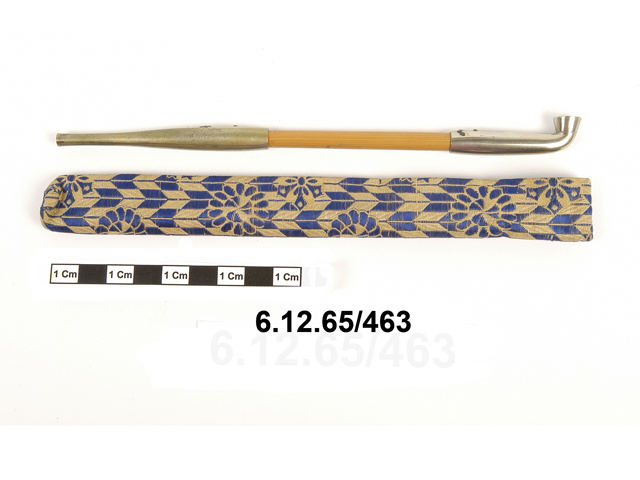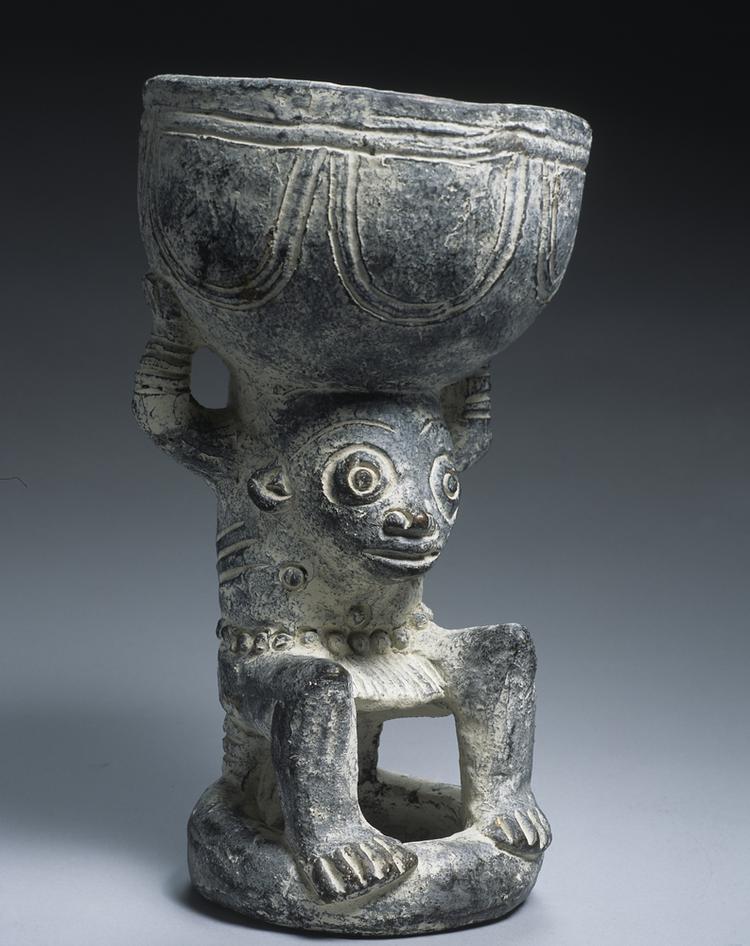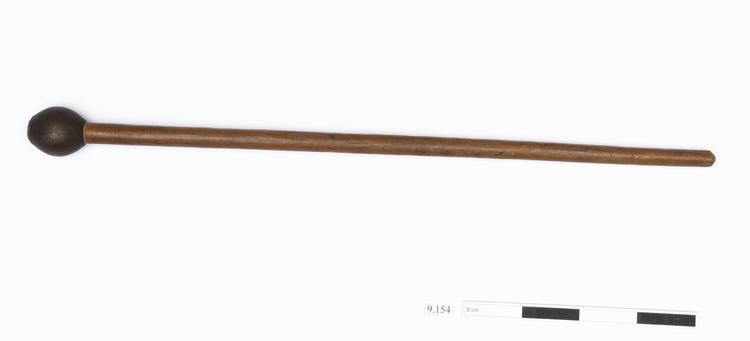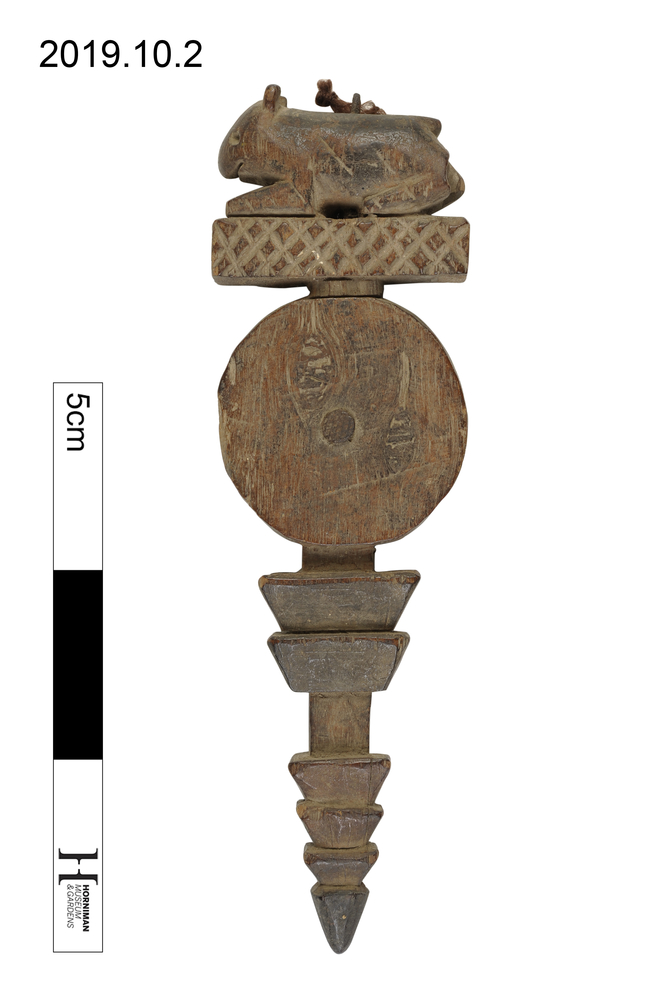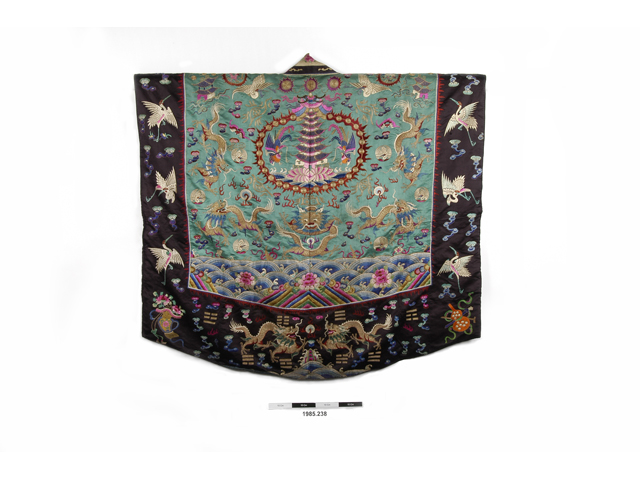
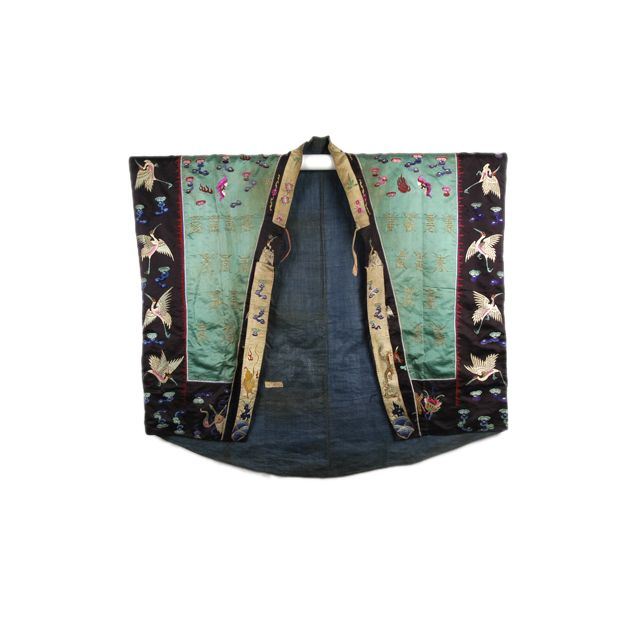
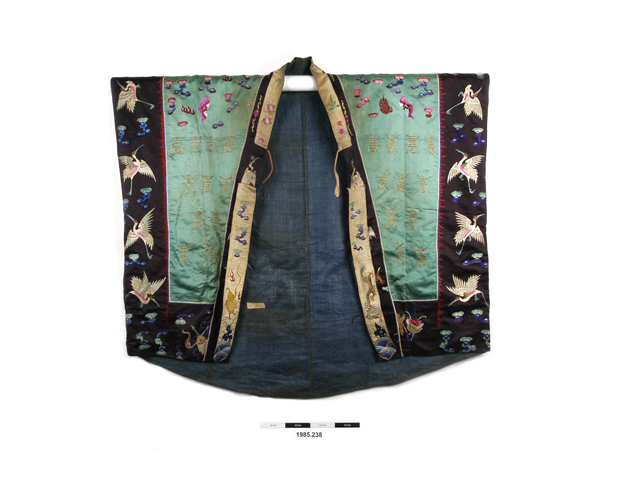
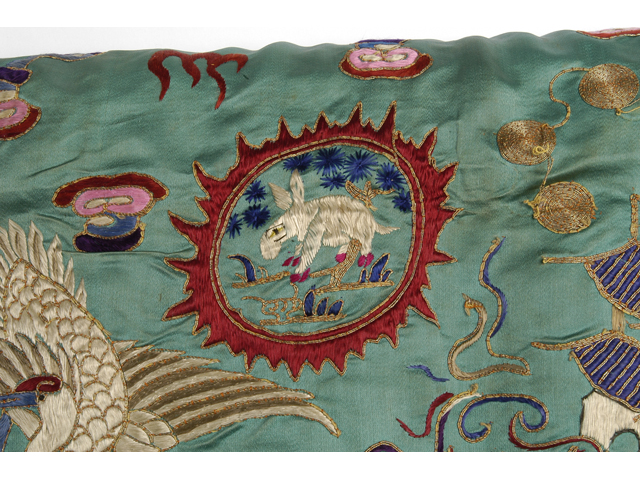
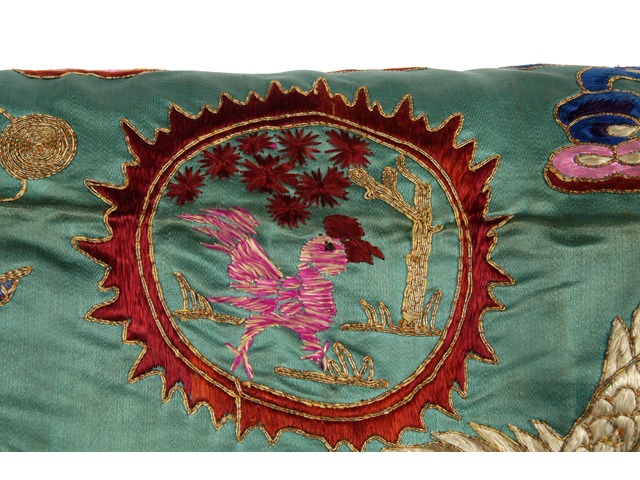
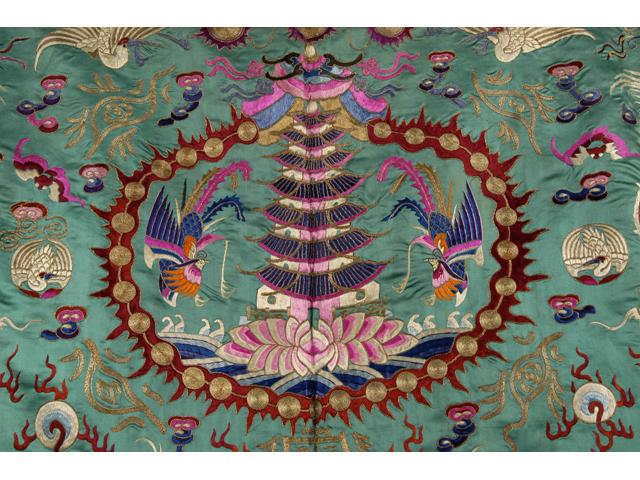
Daoist priest's robe, jianyi, or 'robe of descent' of green satin within a dark indigo satin border, the latter embroidered with cranes symbolising long life. Front opening, with sleeve openings at the upper sides. The whole robe is elaborately embroidered with bright coloured silk thread in many colours and gold metal thread. Front upper part left to right: a red bat on each side, cloud and flame. Lower part: 4 rows of the character for 'shou' (longevity) amongst clouds. Border left to right: four cranes on each side amongst clouds. On left of lower hem lotus and castanets. At right ruyi sceptre and fan. Back: At upper centre a multi-tiered pagoda flanked by two phoenixes. This represents the celestial home of the gods. Surrounding this tower are 28 dots representing the 28 Lunar Mansions: constellations through which the moon passes during its rotation of the earth. These constellations played a vital role in Chinese astrology; a different deity governed each one. Above these constellations are three gold dots representing a group of stars called the Three Terraces. The tower is surrounded by five dragons chasing flaming pearls, also cranes in roundels, clouds in shape of ruyi head above sea waves and peonies. Left shoulder: red bird against the sun. Right shoulder: rabbit within the moon. Border has three cranes to left, three to right. Left corner has vase with flowers, right corner has gourd, sword and staff. Lower hem has two dragons chasing a flaming pearl above waves and rocks, also cloud motifs and masks from the eight trigrams. Two ties added onto front border for fastening; beige decoration with dragon and clouds; lined with dark blue cloth; inscribed paper label inside. The inscription on the paper label “綠色○子, lǜ sè○zǐ” might literally mean 'green robe'.
The celestial "map" on the back of this robe would have been used to symbolize the union of the heavens and the earth in the sacred space of the Taoist altar. It also illustrates the celestial energy of the gods called upon to participate in the ritual. The back of this robe shows some of the most important stars and constellations worshiped in Taoism. In the centre of the robe is a tower that represents the celestial home of the gods. In Taoism, the name of the celestial home is “éƒ�ç¾…è•å�°, yù luó xiÄ�o táiâ€�. Surrounding this tower are 28 dots representing the 28 Lunar Mansions: constellations through which the moon passes during its rotation of the earth. These constellations played a vital role in Chinese astrology; a different deity governed each one. Above these constellations are three gold dots representing a group of stars called the Three Terraces, representing earth, sky and water. These stars, near the Northern Dipper (Big Dipper) in what the ancient Chinese considered the most important part of the sky, were directly linked to the emperor and his three highest ministers. Additionally, the cranes on the border symbolize long life.



